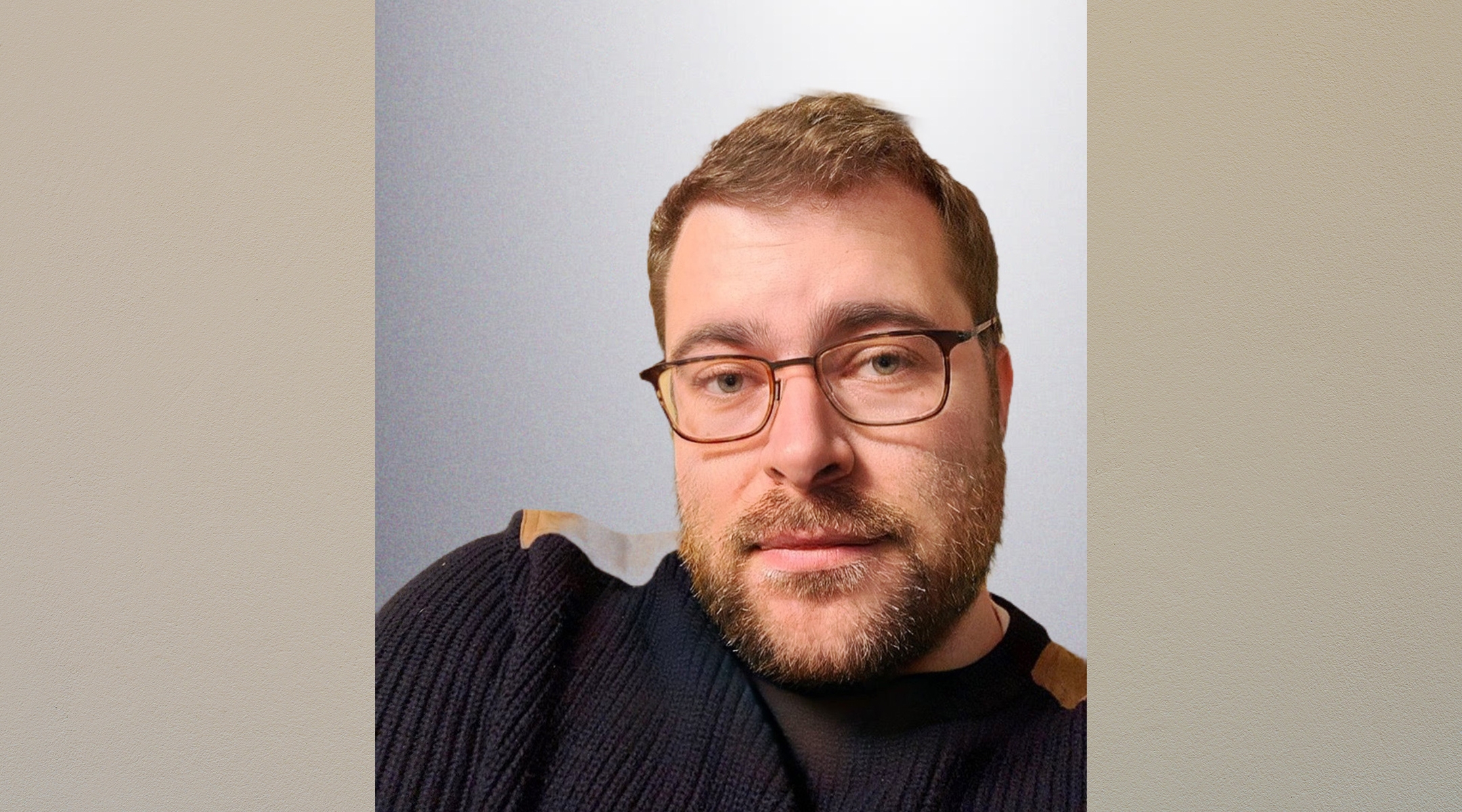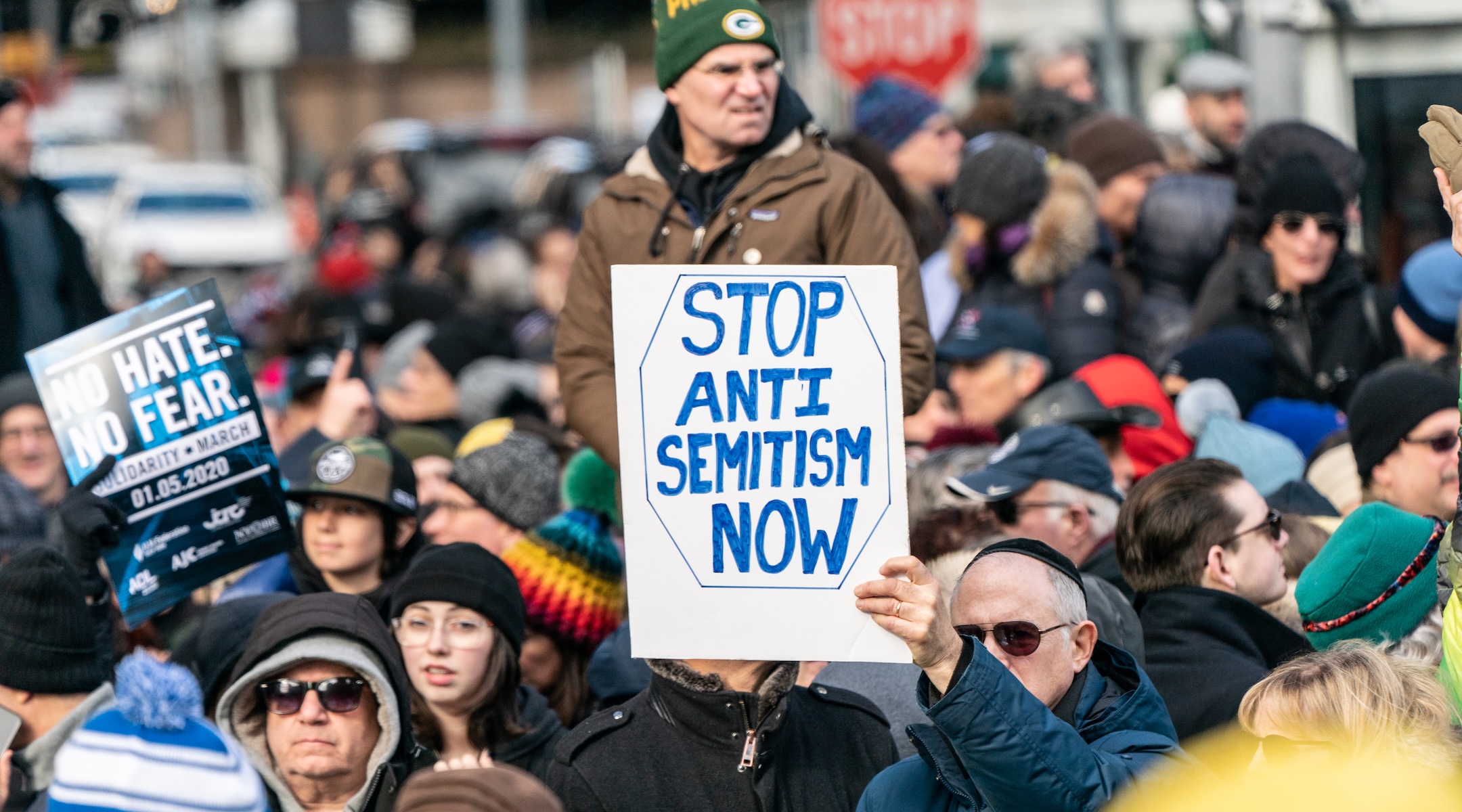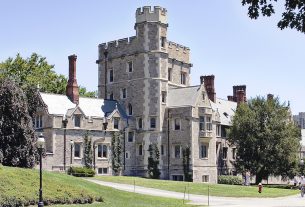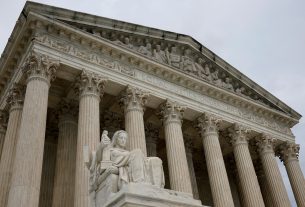When Matt Williams founded a research center for the Anti-Defamation League in 2022, he vowed to “ruthlessly and systematically test” what the organization does. Antisemitism was on the rise, and he wanted the Center for Antisemitism Research to scientifically study what could work to stop it.
The creation of the center, he believed, represented an admission that one of the world’s most prominent voices against antisemitism had been operating with little evidence.
“I would go a step further and say the ADL wants to be a serious nonprofit, measured on our social return on investment, but by a lot of measures, we’ve not been doing well,” Williams said in an interview, citing spiking antisemitism, rising extremism and the erosion of democratic norms around the world.
The ADL established the new center amid mounting pressure from funders and trustees, he added. “The level of tolerance for having no solutions is low right now,” Williams said. “Our Board of Trustees is very serious about ruthlessly holding us accountable to whether or not we’re solving the problems that we set out to solve.”
Here’s how the person recently elected as ADL’s board chair put it: “Flagging and monitoring and measuring antisemitism is important, but by itself will not reverse trends towards extremism, bias and radicalism in American or global society,” Nicole Mutchnik said in an email to the Jewish Telegraphic Agency.
Now, with a staff of nine and about 70 affiliated researchers at universities around the country, the research program overseen by Williams is starting to flex its scholarly might. It recently unveiled, for example, the first scientific study in decades that focuses on anti-Jewish discrimination in hiring.
Previous studies by the center showed that antisemitic attitudes are more strongly correlated with conspiratorial beliefs than any other factor. So, now, it has partnered with a team of university researchers to examine whether correcting misinformation can make a difference.
“We’ve found that we have a better shot at reducing antisemitism by teaching people how to deal with misinformation and disinformation than we have with much of the anti-bias work that we’ve done previously,” Williams said. “Thinking of antisemitism as a digital literacy problem as opposed to a civil rights problem is a big change for ADL.”
Alarm about antisemitism in recent years has driven a doubling of donations to the ADL, topping $100 million in 2022, the most recent year for which complete data is available. It has also sparked the creation of dozens of new organizations and initiatives, including some that are directly critical of the ADL’s approach or are trying to fill perceived gaps.
Many, including Bari Weiss, author of “How to Fight Antisemitism,” prescribe embracing Judaism and Jewish pride. Others are looking to tech for solutions. At least one group focuses on naming and shaming alleged antisemites online. Author Dara Horn says the answer lies in deemphasizing the Holocaust and educating the public about living Jews and their culture. Jewish communal organizations have also poured millions of dollars into physical security measures at schools, synagogues and other Jewish institutions.
The Biden administration in 2023 published a plan featuring hundreds of detailed recommendations, many of which are modeled on ADL’s platform. The plan proposes, for example, streamlined hate crime reporting at all levels of law enforcement and more accommodation for Jewish religious observance in the workplace.
On the right, the Heritage Foundation’s Project Esther proposes a government crackdown on anti-Israel groups once Donald Trump returns to the White House. Meanwhile, left-wing groups like Diaspora Alliance and Jews for Racial and Economic Justice say that effectively responding to antisemitism requires building solidarity with Palestinians and other groups they view as oppressed.
Even as viewpoints and tactics vary, there’s a consensus in the Jewish community that fighting antisemitism must mean more than sounding the alarm about the issue. As a result, the search for evidence-based solutions, grounded in social science research, is starting to gain traction.
“We need to be moving more research resources into what’s working and what’s not working,” Holly Huffnagle, the U.S. director for combating antisemitism at the American Jewish Committee, said in an interview. “Many of us in the Jewish world are talking about this.”
Huffnagle said the AJC, considered a peer to the ADL in terms of size and legacy, doesn’t currently sponsor academic, peer-reviewed research, but that such a program could transform the work of her organization.
“If we find that our interventions aren’t working we need to be comfortable and competent to move away from what we were doing in the past,” she said. “Do we have information about what’s actually changing hearts and minds?”
From left to right, Noa Fay, Ben Stiller, Luda Isakharov, and Einav Tsach attend the 2024 ADL “In Concert Against Hate” at the Kennedy Center Concert Hall in Washington, DC. on Nov. 18, 2024 (Jemal Countess/Getty Images for Anti-Defamation League)
To help answer that question, a pair of political scientists specializing in a field they call “deep canvassing” are using a grant from the ADL to research what kinds of narratives about Jews, when presented to people, can be effective at reducing prejudice. The researchers, David Broockman from the University of California, Berkeley and Josh Kalla from Yale University, have previously demonstrated the effectiveness of the technique in the context of bias against transgender people.
For their new study, the researchers made two-minute video clips featuring eight types of narratives about Jews and showed them over the internet to an audience of about 23,000 survey respondents.
Watching all eight narrative types led to a drop in prejudice, but some had a much stronger effect than others. For example, bipartisanship — a video showing both Donald Trump and Joe Biden condemning antisemitism — proved more impactful than a video depicting a fictional Jewish character suffering, but far less impactful than a video that presented the suffering as the result of discrimination.
Another sign of the awakening underway is the spate of new university programs focused on the study of antisemitism. Gratz College, a Jewish institution for higher education in Philadelphia, now offers a master’s degree in the topic. New York University, the University of Michigan, and the University of Toronto have all made recent investments in the field of “antisemitism studies.”
Ayal Feinberg, a political scientist and the creator of the antisemitism master’s degree at Gratz, believes that many more such programs should have been in place long ago. What made the need suddenly apparent to many more people, he said, was the wave of anti-Israel protests and the spike in antisemitism in the United States after Hamas’ Oct. 7, 2023, attack on Israel.
“Post 10/7, many people in this space were caught with their pants down, and they’re rushing to invest in meaningful interventions that reduce antisemitism,” Feinberg said in an interview. “But those interventions don’t really exist because there hasn’t been a field that has been systematically devoted to developing them.”
As Feinberg, whose quantitative research is sponsored by the ADL’s new center, builds out the field through a dedicated discipline, there’s also a crop of professors from established academic areas such as economics, political science, and sociology who are newly interested in studying antisemitism.
The number of scholars has sharply increased and so has their caliber, according to Williams. He gave the example of Dean Karlan, a prominent economics professor at Northwestern University and former chief economist of the United States Agency for International Development.
“That’s the quality of research we’re getting as a partner nowadays, which frankly, is not what it would have been five or 10 years ago,” Williams said.
The ADL’s sponsorship of individual academics comes amid a contentious time for the group’s relationship with institutions of higher education. As college campuses have become the epicenter of the activist movement seeking to end U.S. military aid to Israel and cast Israeli actions in Gaza as a genocide, the ADL has assertively involved itself in hot-button debates about where to draw the line on free speech. The group says it wants to protect Jewish students from harassment and threatening behavior from pro-Palestinian protests. As part of that mission, it’s been adversarial with universities, accusing administrators of failing to stand up to antisemitism and putting out a contentious “report card” grading schools on their response to it.
But through Williams and his team, the organization has also been trying to better understand what exactly is happening on campuses and why the situation there seems worse than in other contexts. An ADL-sponsored study by a University of California, Irvine professor concluded that increased antisemitism on campus is found where there are fewer allies on campus — and not necessarily where there are more antisemites or where there’s a campus chapter of Students for Justice in Palestine.
“There’s more tacit allowance for antisemitism in public because there are fewer bystanders who are willing or disposed to intervene,” Williams said. “The perceived social cost of it is much lower than elsewhere and that’s more predictive for us than the presence of an SJP on campus.”
Any perceived gaps between ADL’s messaging and its research findings can leave Williams’ program — and scholars it partners with — vulnerable to questioning and criticism. That’s partly the reason that many observers are viewing what he’s doing as daring and risky, even if they are supportive.
“There is a risk of blurring the line between advocacy and scholarship in a moment in which institutional credibility is low and society is very polarized and everything politicized,” said James Loeffler, a historian and the director of the Jewish studies program at Johns Hopkins University. “And then the research won’t be accepted — it will be seen as advancing a political point of view.”
Williams’ own career as a scholar might have gone in a different direction if he weren’t convinced of the pressing danger of recent antisemitism.
He completed his doctoral training as a behavioral social scientist at Stanford University in 2012, and after working on various research projects he ended up at the Orthodox Union. As the largest kosher certification agency in the world, the Orthodox Union generates millions of dollars in revenue, most of which is allocated to charitable causes. Williams crafted a data-driven research program to help the organization spend those funds more impactfully.

Matt Williams is the vice president of the Center for Antisemitism Research at the Anti-Defamation League. (Courtesy)
He had also long maintained an interest in the study of prejudice, which Williams traces in part to his uncommon family background: His paternal grandfather, a member of the Choctaw Nation of Oklahoma, married a Sephardic Jewish woman from Morocco.
In 2019 Williams, who grew up in an observant Jewish family in Atlanta and had always been aware of how his background set him apart, encountered data showing that Americans were becoming less tolerant of difference. Two recent events underscored this finding: neo-Nazis marching in Charlottesville, Virginia, followed by the deadly attack the following year on Jewish worshippers in Pittsburgh.
After each of those events, the ADL sprung into action, tapping its roster of experts to explain the outbursts of violent antisemitism to the public. But in private conversations Williams was having with the group, one of the world’s most prominent organizations fighting hate and extremism was coming to a realization that would have been awkward to publicly acknowledge: It didn’t understand antisemitism or how to combat it nearly well enough. A new paradigm was needed.
“We were under-resourced when it came to actually thinking about antisemitism,” Williams said. “The ADL had sort of become more of a civil rights organization, and we started, especially after Charlottesville, realizing we need more resources on antisemitism. And the person who hired me was sort of like, ‘It’s bizarre that we don’t have this.’”
That person was Adam Neufeld, ADL’s chief operating officer, who “saw the need to develop new theories of change and test them empirically,” Williams said.
When the Center for Antisemitism Research was launched about two-and-half years ago, the name alone was enough to pique the attention of historians who study antisemitism and American Jewish history. In the initial decades after World War II, American Jewish groups, including the ADL, invested heavily in academic research into the sources of antisemitism.
“There was a sense back then that social science would be able to improve people’s lives — that humanity could be perfected by applying scientific research models to social problems,” said Pamela Nadell, a historian at American University and the author of the forthcoming book, “Antisemitism, an American Tradition.”
With the help of grants from Jewish groups, social psychologists, sociologists, and other scholars investigated how antisemitism was connected to totalitarianism, religion and other forms of racial and ethnic stereotyping. It was an organized attempt to understand the psyche of antisemites.
To that end, the ADL commissioned public opinion research hoping to understand the nature of bias — whether it was correlated, for example, to age or education.
Historians don’t really know why or when exactly the investment in such research ended, in part because the ADL has not yet made its archives especially accessible to scholars, at least compared to groups like the American Jewish Committee, the American Jewish Congress, and B’nai B’rith International, which have either handed off materials to a library or created their own open repository, in some cases even digitizing large parts of their collections.
According to Williams, the ADL’s research program petered out by the 1980s because the threat of antisemitism was seen as declining. “Most people generally had positive attitudes about Jews, incident rates were – by most accounts – much lower, the clamoring for real, tangible solutions was less,” he said.
At the time in the United States, the older the average person, the more likely they were to have antisemitic attitudes. There was no stronger demographic correlation than that of age and antisemitism, and a 1992 ADL study noted “the steady influx of younger, more tolerant Americans into the adult population” as the main factor driving declining antisemitism since 1964. It almost seemed like the country was aging out of the problem.
By 2014, in Williams’ telling, the kind of intense antisemitism that was thought to belong to the past was rearing its head once again and, eventually, accelerating so much that the ADL needed to revisit its old strategy around social science research.
“I would say that the major distinction is that we’re working on interventions more than describing the phenomenon,” Williams said, comparing his generation to the researchers of the post-World War II boom. “But, also, you can’t really do one without the other. We do stand on their shoulders.”
In responding to a press inquiry from (JEWISH REVIEW), the head of the ADL rejected the idea that the ADL founded the Center for Antisemitism Research out of a new or reawakened commitment.
“At ADL, we always have sought to ground our work in evidence and to shape our approaches based on research,” the group’s CEO, Jonathan Greenblatt, said in a written response to a series of questions. “We have been tracking antisemitism for decades, measuring attitudes and tracking incidents, and the insights gleaned from this work has helped to inform and shape policies and programs.”
But Greenblatt also acknowledged that recent events are forcing deep changes in the ADL.
“Nothing will ever be the same after 10/7,” he said. “And so, at ADL, it forced us to step back, look in the mirror and ask hard questions about how we reached this point — and what we are going to do differently in response.”
He continued, “In all honesty, I think every Jewish organization should be undertaking this kind of process in light of 10/7. For ADL, that meant taking a beat and examining our policies, evaluating our programs, endeavoring to measure the efficacy of our activities, and making hard decisions based on what we learn. The Center for Antisemitism Research has helped us to do this.”
The ADL’s introspection over the past few years has come amid growing criticism that mainstream approaches to fighting antisemitism aren’t working. And attacks on the ADL have come from both the right and the left.
The right has tended to blame the ADL for being too soft on the pro-Palestinian movement or for getting distracted from its core mission of defending Jews by progressive ideas about race and identity.
The ADL has also been affected by a distrust washing over society of legacy institutions, especially ones perceived by the right as having a left-wing bias. Founded in 2018, an organization called StopAntisemitism has positioned itself as a grassroots alternative to the establishment. Diving head first into the chaotic fray of social media, the group quickly amassed followers whom it sicced on a flurry of targets it accused of anti-Jewish and anti-Israel behavior.
In some regards, the mainstream has shifted to the right when it comes to fighting antisemitism. When Kenneth Marcus and the Brandeis Center for Human Rights Under Law began using aggressive legal tactics to fight antisemitism on college campuses years ago, many Jewish communal leaders rejected his efforts. Nowadays, they are far less likely to tell Marcus that his tactics are counterproductive or that he’s conflating criticism of Israel with antisemitism — instead, they are starting to partner with him on lawsuits.
Meanwhile, on the left, the ADL is often accused of caring about antisemitism mostly insofar as it can be used as a weapon for its pro-Israel advocacy. Rooted in the concept of intersectionality, the left argues that all forms of oppression are intertwined and therefore must be resisted in tandem. One result of that thinking is a critical focus on a certain type of rhetoric from the ADL — for example, when Greenblatt morally equated anti-Zionist groups with white supremacists or when he seemed to liken the Palestinian keffiyeh to the Nazi swastika, though he later clarified that he doesn’t think the keffiyeh is a hate symbol.
A group that exemplifies this critique is the Diaspora Alliance, which says that Jewish fears are being exploited for pro-Israel purposes at the expense of democratic norms protecting civil society and free speech. Emma Saltzberg, the group’s U.S. strategic campaigns director and a critic of the ADL, accuses Greenblatt of engaging in rhetoric that often undermines what she sees as the valuable expertise of the organization’s technical staff. She anticipates the same dynamic with the ADL’s new research agenda.
“I think it’s possible for good things to come out of research funded by actors with questionable political agendas,” Saltzberg said in an interview. “At the same time, Jonathan Greenblatt, ADL’s spokesperson and leader, has demonstrated consistent disregard for the organization’s own in-house experts, so academics who associate themselves with the organization do risk damage to their reputation as serious researchers.”
Williams defended Greenblatt, rejecting the notion that his public statements served to undermine the organization’s technical work. Williams said he works with a range of researchers who don’t agree with the ADL on everything and that he doesn’t lose sleep over people whose opposition to the group is intractable. He also said, however, that given how challenging Greenblatt’s job is, there’s always room for the ADL to improve.
“There’s absolutely work that we could do to acknowledge — just to give you one example — the reality that there are a lot of people who take up anti-Israel positions out of a real humanitarian commitment and dedication,” Williams said. “Acknowledge it, and at the same time present the evidence that many people are being hurt in ways that single them out as Jews because of presumed support, let alone overt support, for Israel.”
Williams’ work at ADL has only just begun, but he’s already reached one profound conclusion in the fight against antisemitism.
“The big takeaway,” he said, “is that we can actually reduce it.”
Ben Sales contributed reporting to this story.



